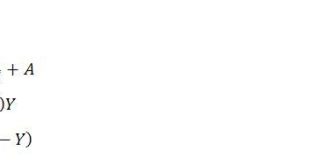Policy responses to the COVID-19 pandemic, much like policy responses to the global financial crisis and Great Recession of a decade ago, carry a couple of clear macroeconomic lessons for anyone who cares to learn them: 1. A currency-issuing government faces no revenue constraint.2. A currency-issuing government dictates the terms on which it issues debt. It is not only electorates that, understandably, have been slow to appreciate these aspects of reality. Plenty of economists,...
Read More »State Money and Markets
A national government with the authority to tax gets to nominate a money of account along with the ‘money things’ that will be accepted in fulfillment of the tax obligations it imposes. In doing so, the government creates a demand for a particular money – a ‘state money’. This motivates the formation of markets for goods and services whose prices are denominated specifically in the money of account. This is true whether the national government with the authority to tax is a monetary...
Read More »Introductory Macroeconomics with a Job Guarantee
In some earlier posts, a job guarantee is added to an otherwise condensed income-expenditure model. This enables comparisons of steady states under different scenarios akin to the typical exercises conducted in introductory macroeconomics courses. What follows is a summary of the model, bringing together aspects that are dealt with in greater depth – but disparately – elsewhere on the blog, along with brief indications of how the model can be extended to include simple dynamics and...
Read More »Politicians Who Want Us to Live Beyond Our Means
Politicians often tell us that we should live within our means. Quite right. Unfortunately, many of them do not appear to understand what this actually entails when it comes to fiscal policy. So far as most economists are concerned, the events of the last decade have thoroughly discredited advocates of austerity. Yet, it remains quite common to hear politicians from across the political spectrum calling for reductions in fiscal deficits or even fiscal surpluses. There appears to be little...
Read More »Three Economic Ideas Threatening to Defenders of the Status Quo
Neoclassical economics, which remains the prevailing orthodoxy, emerged in the late nineteenth century in the context of rising working-class opposition to capitalism. The theory’s appeal in certain circles as an apologetic for the status quo probably assisted its rise to prominence, which is not to imply that this was necessarily a motivation of the neoclassical economists themselves. The rise of any theory requires a receptive audience. Classical political economy had not provided...
Read More »Productivity, Labor Complexity, and Wage Determination Procedures
This post concerns an implication of Marx’s treatment of productivity and labor complexity for the appropriateness of alternative processes of wage determination. For simplicity, it is assumed that all activity is productive in Marx’s sense (that is, productive of surplus value) and that conditions are competitive in the Marxian (and classical) sense that investment is free to flow in and out of sectors in search of the highest return. Introducing unproductive labor, including a...
Read More »Politically Motivated Attempts to Own or Disown China as “Capitalist”
There are often attempts in the west to depict China as capitalist rather than socialist. After decades of China going from strength to strength on macroeconomic criteria – and in view of its undeniable achievement in reducing poverty at a rate unmatched in recorded human history – some on the right wish to deny that this could have been accomplished through socialism and so instead claim China to be capitalist. At the same time, there are those on the left who wish to distance notions of...
Read More »Macro Dynamics with a Job Guarantee – Part 6: Price Stabilization
The previous part of the series introduced a short-run relationship between prices and output, P(Y), that is in keeping with a Kaleckian or Keynesian understanding of demand-led economies. According to this view, within the economy’s capacity limits, output reflects demand while prices reflect cost. So long as supply conditions remain unaltered, variations in demand are met with variations in production at stable prices. But when spending goes beyond the economy’s current capacity to...
Read More »Macro Dynamics with a Job Guarantee – Part 5: Price Level
So far, in considering a simplified economy with a job guarantee, the focus has been on the demand-determined behavior of output and employment. Prices, in this exercise, have simply been taken as given on the grounds that they are not causally significant in the process. This approach does not require prices to remain constant, though, for given supply conditions, they may well do so over a fairly wide range of output for reasons to be discussed. Nor does it require that prices are...
Read More »Macro Dynamics with a Job Guarantee – Part 4: Dynamic Stability
The model, in its present form, is short run in nature. It concerns an economy for which total employment, within-sector productivity and productive capacity are all taken as given. Variations in total output are achieved by workers transferring between two broad sectors that have differing productivity. In considering this economy, discussion has touched on aspects of a steady state and system behavior outside the steady state. It has been supposed, in the event of exogenous shocks, that...
Read More » Peter Cooper: Heteconomist
Peter Cooper: Heteconomist




